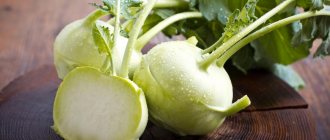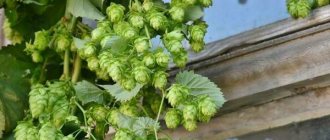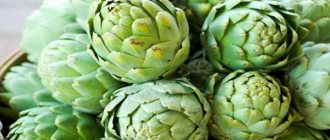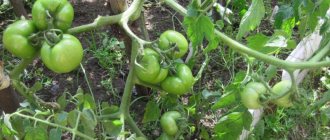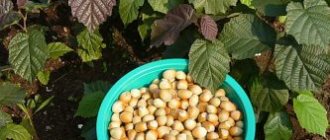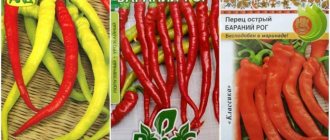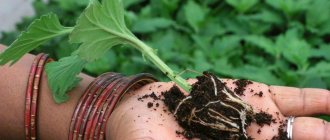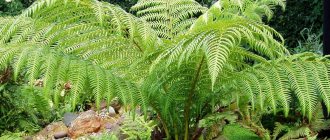Syrian hibiscus belongs to the mallow family. People also call it the Syrian rose. They can grow in midland conditions and withstand winter frosts. Garden hibiscus can decorate any garden. The plant naturally grows in tropical and subtropical climates, but has taken root even in Russia. You can find it in many summer cottages, but many prefer to grow it not in open ground, but in greenhouses, so as not to damage it in winter. In the southern regions it can be grown in open ground, but with the condition that it will be covered for the winter.
Planting/growing
In order not to deceive your most optimistic expectations, at the time of purchasing a seedling you should carefully approach the choice of a specimen. A visual inspection will tell you if the plant is healthy. Opt for a thick and bushy option. The leaves should be shiny and bright green, without visible damage or signs of disease. Checking the root system of a crop is also not difficult. It is enough to knock on the walls of the container to take out the earthen lump and make sure that the roots are white and healthy in appearance, and that the root system is generally well developed. For regions with harsh winters, varieties with non-double flowers should be preferred - it will be much easier for them to bloom in cold climates.
The next priority will be to select the most suitable corner in the garden for the Syrian hibiscus and plant it in a permanent place. In this matter, you need to concentrate on the intersection of two important factors at once. Since the flowering bush was purchased for decorative purposes, you need to show design acumen and determine the best proximity to other inhabitants of the landscape. Florists, if space allows, advise placing hibiscus on the lawn or in the rock garden as a tapeworm - a single, stylish-looking plant. However, a flowering bush will look no less advantageous when surrounded by partners - plants with similar care needs.
For example, the combination of white or pink Syrian hibiscus with purple oak sage will give an excellent result. In company with ground cover varieties of flowerbed roses, a tall specimen of large-flowered hibiscus will exceed all your expectations! Thickets of fragrant lavender of a soft lilac color will not only decorate neatly trimmed Syrian rose bushes of any color, but will also protect against invasions of harmful aphids. The partnership of a tropical guest with other shrubs with contrasting foliage colors will attract the attention of those walking around the garden. How advantageous the neighborhood with evergreen plantings of juniper or thuja will be can be judged either by those who have seen the charming picture with their own eyes, or by those with a rich imagination. In any case, you will not be able to hide a bright and expressive plant from the admiring glances of your guests, no matter where it is placed!
The second most important factor for choosing a place to plant hibiscus will be the future comfort of the plant itself. The longevity of the bush directly depends on this. Under the most favorable circumstances, the bush will live for at least 20 years! The culture prefers to bathe in an abundance of sunlight and will reveal itself in all its glory only if it is in a sunny place, sheltered from gusty winds with well-drained soil.
In the spring, after the threat of returning frost has passed, before active sap flow begins, the seedling can be planted in open ground. Over the coming summer, the young plant will be able to firmly take root in a new place and adapt to unfamiliar conditions. In special cases, this can be done in September so that the bush acclimatizes in the warmth and has time to prepare for the coming cold weather. Then you will need to cover the tree trunk circle with a generous layer of mulch, and tie the seedling with insulation or spruce branches.
The soil should be light, but at the same time fertile, moist, and permeable to water. Roses prefer such soils, which is why they are so comfortable in the company of hibiscus.
Let's look at the landing rules. After the seedling in the container is brought into the house, it should not be watered. The soil ball must remain dry before planting.
Before transshipment of tree-shaped hibiscus, you will need to dig a planting hole that is 2 times the volume of the seedling’s root system. If the soil in the selected area of the garden or flower bed is not nutritious enough, or has not been fertilized in advance, the planting hole should be even deeper by 25-30 cm in order to accommodate an additional layer of compost or humus mixed with the native soil. When the hole is ready, a 15-centimeter drainage layer of broken brick or other available material suitable for its properties is laid on the bottom. Next comes the “layer cake”: cover with a 10-centimeter layer of sand, 15-centimeter of compost and again with a layer of sand.
A soil mixture is prepared from two parts of extracted native soil, one part of sand and four parts of peat for lightness and porosity.
Thus, just before planting, the depth of the hole will become equal to the height of the container with the seedling. Then the walls of the container are tapped to painlessly separate the earthen lump and, tilting the container, the plant is removed, carefully straightening the roots. The seedling is placed so that the top of the earthen ball with roots is level with the surface of the earth, and the root collar is slightly buried in the soil. Free voids near the walls of the pit are filled with soil mixture prepared in advance and compacted.
Form a watering circle: hill it up so that a spacious hole for water is formed around the bush. Generously water the flower, which has been waiting for irrigation since the moment of purchase, and wait until the water is completely absorbed for better contact of the roots with the ground. Add enough soil mixture so that the tree trunk circle is level with the surface of the area.
Florists remind that when planting Syrian hibiscus, it is important to take into account the factor of sufficient space around the plant in order to be able to properly care for it. By autumn, a mature tree will rise to a height of up to two meters, and the width will be at least 70 cm. This means that when planting a row of this crop, pits should be planned no closer than one and a half meters from one another. Carefully installed strong support and a garter as they grow will save your pets from the possibility of being knocked over during a rainstorm or squally winds.
Types and varieties of Syrian hibiscus with photos
As mentioned above, Syrian hibiscus, as well as its varieties, are most often cultivated in the garden. But other types of such plants and their various varieties are also grown in open ground.
Syrian hibiscus (Hibiscus syriacus)
The birthplace of this plant is not Syria, but China. Under natural conditions, this species is a deciduous shrub that can reach 5–6 meters in height. The shape of the rich green leaf blades is ovoid, and their length is up to 10 centimeters. During flowering, single flowers bloom, which can be painted in different colors. Gardeners cultivate hibiscus with both simple and double flowers, and the plant form can be either standard or bush. The best varieties:
- Diana . The height of the bush is about 200 cm. White flowers reach 12 centimeters in diameter, the edges of their petals are wavy.
- Vayelit Ilar Double . This upright, powerful shrub is decorated with semi-double or double flowers of bluish-violet color with red spots in the middle.
- Pink Giant . Pink single flowers have a purple spot at the base.
- Carneus Plenus . The stems of this shrub are very flexible. Double flowers of a pale pink hue are decorated with a crimson spot located in the middle.
Trifoliate hibiscus (Hibiscus trionum)
This species is native to North and Central Africa. However, today it is widely cultivated in all areas of irrigated agriculture. Hibiscus has a tap root, as well as a branched straight stem, the height of which is about 0.8 m. There is pubescence on the surface of the alternately arranged tripartite leaf plates, and they also have a petiole. The pale yellow flowers reach about 40 mm in diameter and have a dark red center. This species has one characteristic feature: its flowers open in the morning and close in the afternoon. The flowering period of such a plant is more than 30 days. The fact is that new buds form in the axils of each leaf blade, and if the bush grows in favorable conditions, then the formation of flowers will occur every day.
Hybrid hibiscus (Hibiscus hybrida)
In addition to these species, which can be found in the garden and in natural conditions, gardeners also cultivate hybrid hibiscus, as well as its varieties. It was already mentioned above that breeders obtained this plant by crossing 3 North American species, namely: bright red, armed (holly) and marsh hibiscus. Hybrid hibiscus are herbaceous perennial plants that produce very large and beautiful flowers when they bloom. Popular varieties:
- Youth . The height of the weakly branched plant is about 150 cm. The stems are painted in a pale greenish-yellow color, and shoots extend from them at an angle of 60 degrees. Three-cut or five-cut leaf plates are painted greenish-yellow. Pink flowers have a white bowl and bottom, they reach up to 100 mm in diameter and have a tulip shape.
- Late . Such a compact, densely leafy bush reaches a height and diameter of about 100 cm. The shape of the leaf blades with a jagged edge is oval-arrow-shaped, their petioles are thick, and the veins are light in color. Pinkish-crimson flowers with a lilac tint have the shape of narrow bells, they reach up to 70 mm in diameter. Flowers are formed on thick short peduncles.
- Pale pink . The height of the herbaceous bush is about 1.7 m; short shoots extend from the stems at an angle of 60 degrees. The foliage is three-cut, it has a greenish-yellow color. Pink tulip-shaped flowers reach about 12 centimeters in diameter, their bowl and bottom are white.
- Pink porcelain . The height of the bush with greenish-yellow branched stems is about 1.3 m. The middle lobe of the deeply cut leaf blades is wide and protruding, they are painted in a dusty greenish-yellow color, and their petioles reach up to 60 mm in length. Large pinkish, bell-shaped flowers with a barely visible yellowish tint sit in bunches on short peduncles; they reach about 12 centimeters in diameter.
